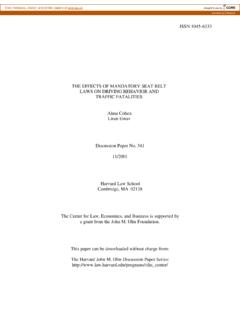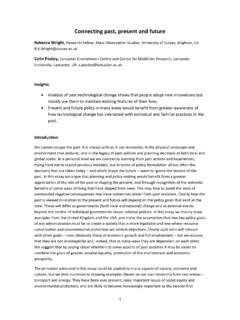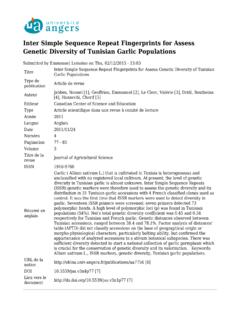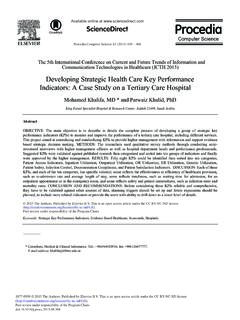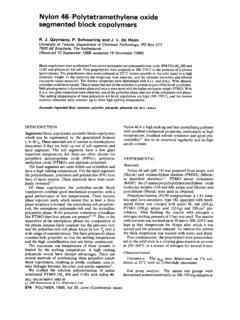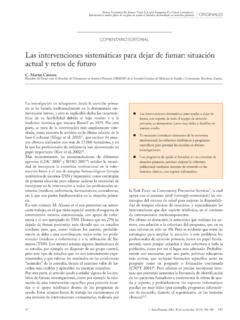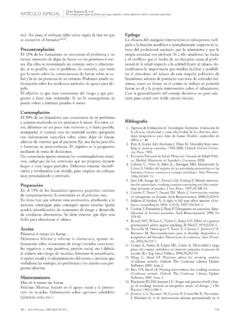Transcription of Supervision in the Helping Professions - CORE
1 AJPP - 60 - Vol 1, No 1 (2017) Book Review STATEMENT ABOUT THE BOOK S PURPOSE Hawkins and Shohet (2012) have surveyed and concisely mapped the developing and changing landscape of Supervision , including the recognition and impact of new technologies including e- Supervision . They have added new chapters and ideas, with the second edition including a chapter on diversity. The latest edition recognises the importance of complex ethical challenges and working with cultural difference in the milieu of transcultural Supervision . The authors interrogate the economic, demographic and ecological crises that irrevocably face humanity in the context of an exponentially growing population, diminishing resources and global economic disruption.
2 Hawkins and Shohet (2012) reason that Supervision in the Helping Professions will have its part to play in mediating what they describe as the Great Disruption (Gilding, 2011). The purpose of the book is to assist supervisors and supervisees in developing an integrated and relationally based supervisory approach, combining the essential elements of development, support, reflection and qualitative evaluation. Supervision in the Helping Professions by Peter Hawkins and Robin Shohet Publisher: McGraw Hill Open University Press, 4th Ed, 2012 AUTHOR(S) OF THIS REVIEW: Terence Nice BSc MSw MSc MA PGCHE Lecturer in Psychological Therapies, Centre for Professional Practice, University of Kent. Accepted for publication: September 29th 2017 Address correspondence to Dr Terence Nice, Centre for Professional Practice, University of Kent: Chief Editor: Claire L ParkinPhD.
3 Current affiliation is: Centre for Professional Practice, University of Kent, M3-15 Medway Building, Chatham Maritime, Kent. ME4 4AG. UK. AJPP (ISSN Number: Online 2059-3198). Copyright 2015 by the Centre for Professional Practice. Introduction Supervision in the Helping Professions (2012) written by Peter Hawkins and Robin Shohet with contributions from Judy Ryde and Joan Wilmot was first published in 1989. It is a classic of its time in the field of Supervision placing professional practice at the heart of the supervisory process. Presently, it is in its fourth edition, but its theoretical edge and applicability have not been blunted. It is a core and foundational text bringing together a set of ideas, principles, maps and models of Supervision in a cross-modal and generic fashion. In this way, it is of use to health professionals, social workers, psychotherapists, psychologists and executive coaches.
4 It offers an over-arching and panoramic view of the developmental march of Supervision from the swampy lands of practice (Schon, 1983 as cited by Carroll 2012) and the remote prairies of research towards a contemporary conceptualisation of Supervision as a modern global metropolis. Context The book provides a vehicle to disentangle some of the knotty issues, which confound supervisory process and practice. Hawkins and Shohet are authors who stand tall amongst their peers. Their work in the field of Supervision speaks with an articulate and authoritative voice. The book is structured to include a detailed overview of the supervisory process, including bilateral Supervision , peer Supervision , group Supervision and supervisory networks and cultures. The book s structure is robust and well-orchestrated taking the reader systematically through sixteen brought to you by COREView metadata, citation and similar papers at by University of Kent Open Access Journals AJPP - 61 - Vol 1, No 1 (2017) Book Review chapters which are partitioned into four separate parts.
5 Part I deals with the supervisee s perspective; Part II on becoming a supervisor and the process of Supervision ; Part III is dedicated to group, team and peer- Supervision ; Part IV the concluding section is centred on an organisational approach. The chapters unfold in a logical and coherent fashion, in a language, detail and format that is highly accessible to the reader. The chapters have been judiciously written with the authors paying careful attention to reflective practice, transcultural Supervision , ethical Supervision , supervisory effectiveness and the development of a dynamic learning culture. The chapters can be read as stand-alone texts and each one has a conclusion, which draws together the salient discursive threads. Each chapter positively dove-tails into the next chapter. Hawkins and Shohet (2012) offer a comprehensive definition of Supervision : they write: Supervision is a joint endeavour in which a practitioner with the help of a supervisor, attends to their clients, themselves as part of their client practitioner relationships and the wider systemic context, and by doing so improves the quality of their work, transforms their client relationships, continuously develops themselves, their practice and the wider profession ( ).
6 This umbrella definition captures the bilateral relationship of supervisor and practitioner highlighting the functions of Supervision as supportive, instructive, contextual and transformative. Central to the book is what has come to be known as the seven - eyed model of Supervision , which has seven supervisory focus modes. These are systematically listed and methodological described moving from a focus on the client, to the supervisee, the supervisory relationship, the supervisor s own processing and the progressive aspects of context and style. The seven - eyed model was first established in 1985, and the authors have sought to test and expand it on the basis of critiques received from other authors and practitioners. For Hawkins and Shohet (2012) the model has stood the test of time and the power of the seven - eyed model of Supervision is that we continue to learn and gain new insights from using it even after more than 25 years.
7 It has proved useful beyond our original horizons and has been used in a great variety of cultures and in different Professions from youth work to palliative care; from psychiatry to management development; and from education to couple therapy ( ). Hawkins and Shohet (2012) do not address coaching and mentoring per se, but include a section on team coaching in Chapter 12 citing the definition by Hawkins and Smith (2006) as enabling a team to function as more than the sum of its parts, by clarifying its mission and improving its internal and external relationships. It is different from coaching team leaders on how to lead their teams, or coaching individuals in a group setting ( ). Consideration is given to the importance of focusing upon shared value systems in addition to task and process. Supervision in the Helping Professions has a strong ethical and moral fibre with the author s observing the rules and principles of proper supervisory conduct.
8 The book s main text is richly peppered with stepped models, illustrative diagrams, figures, case scenarios and learning points. These are included to offer a wider and deeper understanding of supervisory principles and processes. At the end of the book, there is a small glossary explaining an array of terms used by the authors. AJPP - 62 - Vol 1, No 1 (2017) Book Review Evaluation This foundational text has set a high-bench mark in the supervisory domain. It is not a shallow motivational text based upon personal or business success, but a work of high scholarly merit. The authors achieve this through a systematic utilisation of the extant literature, which is married to the hard-headed realities of supervisory practice.
9 They tease out the core complexities and supervisory issues, carefully examining and evaluating their implications and impact. Hawkins and Shohet have produced a text which is clear, accessible and practical. For those unfamiliar with psychoanalytic constructs, systemic theories or clinical psychotherapies, it may seem that the authors theoretical positioning is unfamiliar or foreign. However, this does not obscure the fundamental thrust of the book, which is to examine supervisory ideas, models and processes in the context of the Helping Professions . The authors are not afraid to test out their ideas, concepts and models in the realpolitik of professional practice. Their ideas have been borne of practice rather than research and the reader who is looking for a compendium of research studies is likely to be disappointed. Their art is in continuing to respond, refine and recycle their theoretical ideas in the context of dynamic, local and global changes.
10 Given that this is the fourth edition and was published 2012, it still retains a sharp and critical cutting edge. However, it could be argued as to how much longer the authors ideas can be revised and reformed without becoming tired and fatigued. In the supervisory world of practice, events have moved on apace especially with the development of super technologies and whilst they do address these, they may not capture the radical and revolutionary effects that these technologies are introducing in national and global health settings. Technological advances have already transformed the way that we think, feel, communicate and build relationships through the Internet, the mobile phone, gaming and social media. It is likely that technological advances will affect the very fabric and quality of our relationships. One could go much further than Hawkins and Shohet (2012) and argue that such technological advances will come to shape the very basic building blocks of our psyche, impacting and affecting our most basic physiological and psychological functions inexorably resulting in changes to our essential relational capacities with others.

